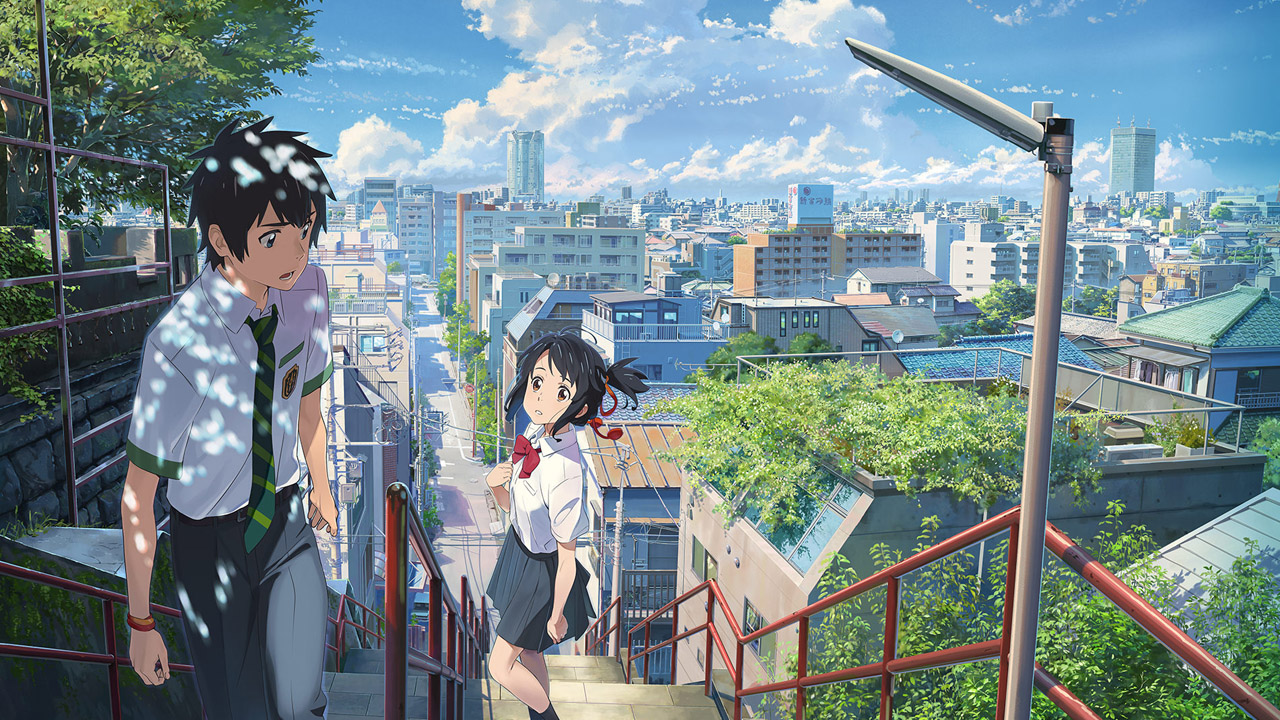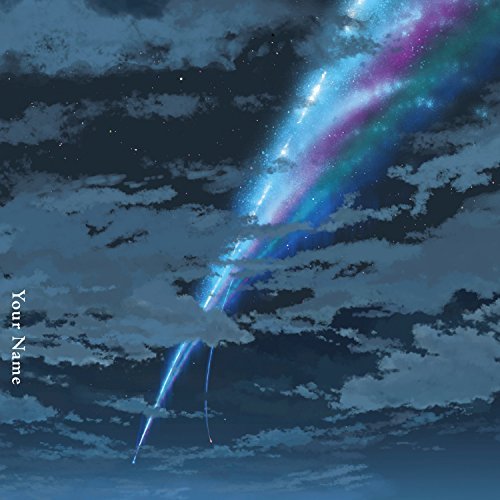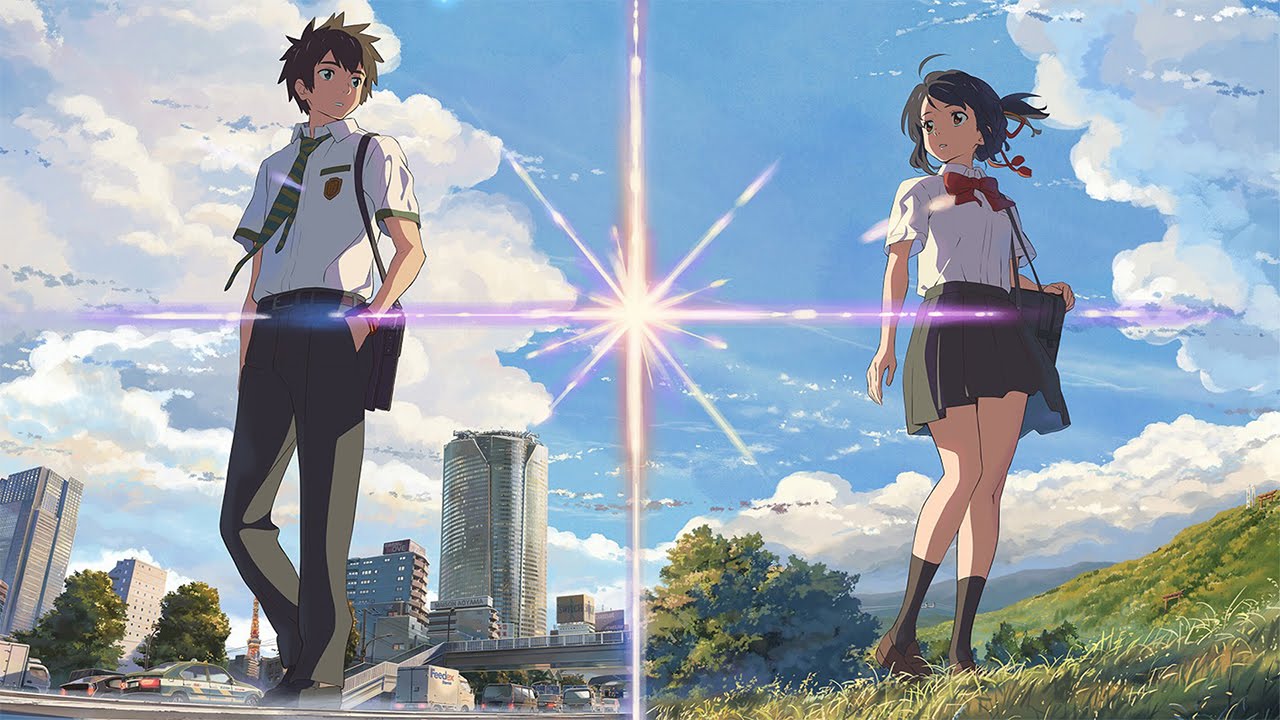Makoto Shinkai has been known for crafting stories that involve star crossed lovers, two people who are destined to meet and fall in love at one point in their lives but ultimately go their separate ways. Earlier in his career, Shinkai covered this theme in both 5 Centimeters Per Second and The Garden of Words. Shinkai’s 2016 film, Kimi no na wa., also referred to as Your Name, serves as the culmination of his multiple attempts to master this recurring theme.
Shinkai has been known to use the imagery in his films turning them into symbols that represent his two many characters.
Particularly, Shinkai has repeatedly used images from nature to show the connection between his two protagonists and their relationship with one another. 5 Centimeters Per Second used cherry blossom petals explaining that even if two petals were next to one another while on the tree, they may be separated by the time they hit the ground representing Takaki and Akari’s connection as time passes. In his 2013 film, The Garden of Words, Shinkai uses the rain to represent the relationship between Takao and Yukino allowing it to serve as the bridge that repeatedly brings the two together.
In Kimi no na wa., he again used an aspect of nature as a means of illustrating the connection between the two lovers. The image of the comet that is seen throughout the film symbolizes Taki and Mitsuha’s relationship. The relationship of the two are directly tied to the effects of the comet and how it affects Mitsuha and her town Itomori. The comet’s passing has repeatedly affected Itomori being the cause for both the crater that the town is situated in and the crater wherein the special underworld shrine is located. The comet’s return this time serves as the time limit for their body switching.
Mitsuha’s red ribbon is a representation of the red string of fate. According to Japanese culture, the red string of fate is meant to connect two people who are destined for each other. The timeline has Mitsuha visit a Taki of the past who has yet to begin switching bodies with her. When she calls out to him, he fails to recognize her. As she is swept away by the crowd, she manages to pass her red ribbon to him. It is revealed that Taki keeps this red ribbon on him symbolizing their connection. It is this connection between the two people, the two times, that allows Mitsuha and Taki to begin switching bodies later on in Taki’s life allowing their relationship to transcend time. It is that same image, the red cord, that connects the two and brings them together at twilight on the day that the comet crashes into Itomori.
Considered as a masterpiece of Shinkai, it is not surprising that the film is riddled with even more symbolism rooted in religion and Japanese culture. The elements and layers of symbolism that are utilized undoubtedly give the film more depth – depth that can only be truly appreciated through multiple viewings.

A staple of Makoto Shinkai’s films stunning artwork and animation. Oddly enough, it was surprising and initially off-putting to see the art style that he chose to use for Kimi no na wa. considering that the visuals seen in his earlier work, The Garden of Words, were subjectively more impressive. Kimi no na wa. failed to take the art from The Garden of Words and elevate it, something that Shinkai has progressively done through his successive films. Despite this however, the art is nonetheless stunning. His ability to compose a scene is made apparent on multiple instances. An impressive scene was when Taki journeyed to the underworld shrine and saw the entirety of the crater from above. The use of rain and mist highlighted the mystery and atmosphere surrounding the shrine. Shinkai’s ability to capture the beauty of nature is also reflected in the similar scene when Taki and Mitsuha meet in person during twilight. The moment when they stand, face to face and finally connect across time is captured beautifully with the sky painted in colors of twilight setting the mood for their destined encounter.
The film’s soundtrack, produced by RADWIMPS, was a great choice amplifying the viewer’s connection to the two characters. The upbeat vibe of Zen Zen Zense captures how youthful Mitsuha and Taki are and really represent their characters as students and as young adults. Sparkle, aside from being appropriately named to reflect the scene of the comet, really brings about a sense of hope even as the comet begins to fall closer to Itomori. It takes the desperation of the situation surrounding both Itomori’s and Mitsuha’s demise and turns it into hopefulness – a sign that their shared fate may truly be changed by the efforts of Taki and Mitusha.

Kimi no na wa., is truly the epitome of Makoto Shinkai’s work and experience, the culmination of all the lessons that he learned from his previous iterations of the theme of star crossed lovers. He acknowledges this mastery of the classic plot line himself by finally depicting a different ending in Kimi no na wa., as opposed to how he normally closes his films. He ends with Taki and Mitsuha finally reconnecting, meeting each other once again despite having lost their memories of one another previously. This serves as the final symbol of the film, a symbol of Shinkai’s own journey to master the story that he repeatedly utilized in his previous projects reaching its peak.
